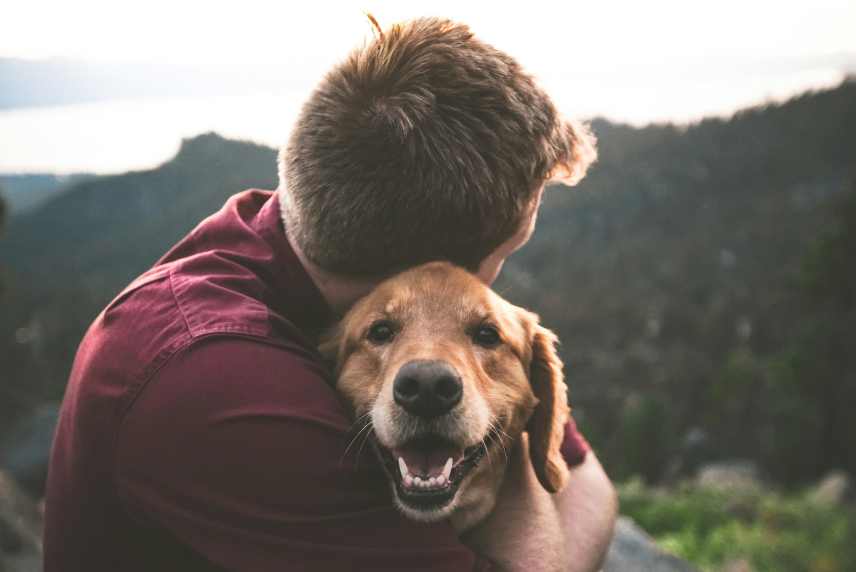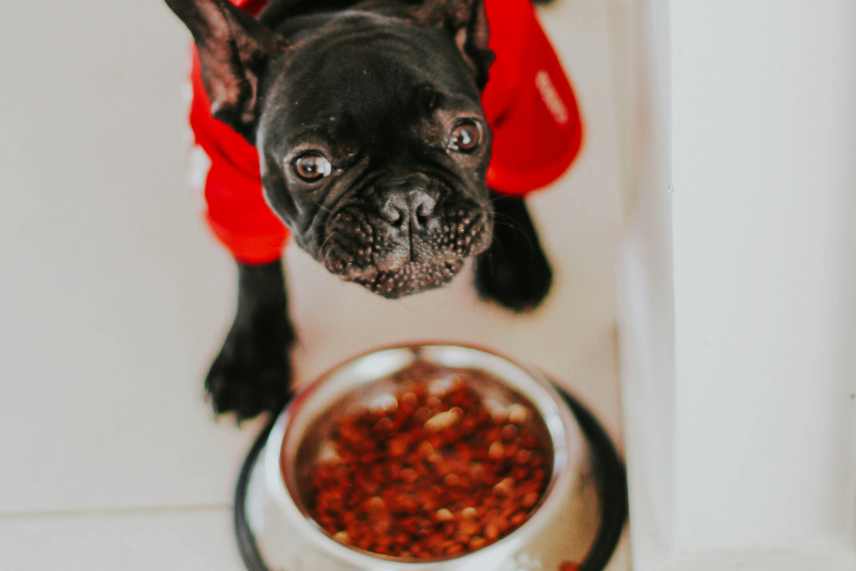Have you ever noticed your furry friend freaking out at the sight of a vacuum cleaner, trembling during thunderstorms, or maybe getting a tad too vocal around other dogs? If you’re nodding along, you’re not alone.
But here’s the good news: a superhero technique in dog training can help turn your dog’s fear into cheer. It’s called counter conditioning, and it’s all about changing your dog’s emotional response to their personal bogeyman by pairing it with something extraordinary instead.
Click here for Expert Videos to Stop Dog Behavioral Problems!
What is Counter Conditioning?
Imagine if someone handed you a hundred bucks every time you saw a spider (assuming they give you the heebie-jeebies). Eventually, you will start feeling good about those eight-legged creatures. That’s counter conditioning in a nutshell but for dogs. It’s a behavior modification technique that helps your dog form positive associations with things they’re scared of or stressed by, turning a negative experience into a positive one.
Top-Rated Counter Conditioning Products
Before we dive into the nitty-gritty of training, let’s talk gear. While counter conditioning primarily involves your response and behavior towards your dog, there are a few products out there that can support this process:
- High-Value Treats: The key to successful counter conditioning is using treats that your dog goes wild for. Think beyond the regular kibble to something irresistible, like freeze-dried liver, cheese bits, or specially made high-value dog treats. Products like Zesty Paws Calming Bites or Blue Bits Training Treats For Dogs often get rave reviews for their effectiveness in keeping dogs motivated and focused during training sessions.
- Clickers: A clicker can be a powerful tool in marking the exact moment your dog shows the desired behavior. It’s all about timing, and clickers like the PetSafe Clik-R or Starmark Pro-Training Clicker are praised for their ease of use and effectiveness in training sessions.
- Comforting Gear: Sometimes, part of counter conditioning involves making the scary thing less scary. Products like ThunderShirt, a swaddle-like vest designed to calm anxious dogs, can be a helpful adjunct to your training plan, especially for fears related to noise or separation.
*As an Amazon.com Affiliate I may earn a small commission should you buy a product featured on this page. At no extra cost to you.
Step-by-Step Positive Reinforcement Counter Conditioning Training
Now, let’s get into how to counter conditioning with your dog. Here’s a simple, step-by-step guide to get you started:
- Identify the Trigger: Start by figuring out precisely what scares or triggers your dog. Is it other dogs, loud noises, or perhaps a specific situation like visiting the vet?
- Choose the Right Reward: Pick a reward that your dog absolutely loves. This needs to be something special, reserved for training sessions only.
- Establish a Starting Distance: Begin at a distance where your dog notices the trigger but doesn’t react negatively. This is your starting point.
- Introduce the Positive Association: Present the trigger and immediately follow it with the reward. The goal is for your dog to associate the sight or sound of the trigger with the arrival of something great.
- Gradually Decrease Distance: Slowly close the distance between your dog and the trigger, maintaining the positive association at each step. If your dog shows distress at any point, take a step back and proceed at a slower pace.
- Practice Makes Perfect: Consistency is key. Regular, short sessions are better than infrequent, long ones. Patience and persistence will pay off.
- Celebrate Small Victories: Every positive interaction is a step in the right direction. Celebrate these moments with your dog to build their confidence and your bond.
Remember, the pace of progress will vary from one dog to another. Some may breeze through the steps, while others may need more time to adjust. The key is to stay positive, patient, and consistent.
Counter conditioning might sound like a fancy term, but at its heart, it’s about helping our dogs live happier, more stress-free lives. Whether you’re tackling a specific phobia or just aiming to boost your dog’s confidence, the power of positive associations cannot be overstated. With the right approach, a dash of patience, and a sprinkle of your dog’s favorite treats, you’ll be well on your way to transforming those fears into fearless adventures.
So, grab some high-value treats, a clicker, and a comforting doggie vest, and start your journey towards positive change. Your dog’s tail wags, and bright eyes will thank you for it!

From Scared to Prepared: How Counter Conditioning Boosts Your Dog’s Confidence
Picture this: You’ve just adopted the cutest, fluffiest rescue dog named Charlie. He’s everything you’ve ever wanted in a furry companion—loyal, loving, and with a tail that never stops wagging. But there’s a catch. Charlie is terrified of car rides. Every time he so much as sees your car, he turns into a trembling, whimpering, furry ball of anxiety. It breaks your heart to see him like this, especially since you’ve dreamed of road-tripping with your four-legged buddy by your side, exploring new parks, and visiting dog-friendly cafes.
Here’s where the magic of counter conditioning comes into play and why it’s so darn important. Let’s dive into a scenario where counter conditioning turns Charlie’s car ride fears into a tail-wagging enthusiasm.
The Scenario: Transforming Fear into Joy
Initially, Charlie’s fear of the car seems like an insurmountable barrier. You notice his stress signals—ears back, tail tucked, avoiding the car at all costs. You realize that if you don’t address this fear, it’s not just car rides that’ll be a problem; this anxiety could spill over into other aspects of his life, limiting his experiences and affecting his overall well-being.
So, you decide it’s time to introduce Charlie to the concept of counter conditioning. Your mission? To change Charlie’s emotional response to the car from fear to joy, or at the very least, calm acceptance.
Step 1: Pairing the Car with Positive Experiences
You start by simply sitting near the car with Charlie, not making any moves to go in. Every moment he remains calm, he gets a treat—the good stuff, like bits of chicken or cheese. Pretty soon, Charlie starts to look at the car with a hint of curiosity instead of fear. Why? Because he’s learning that being near the car means delicious treats appear.
Step 2: Gradual Introduction
Next, you up the ante. You open the car door and continue with the treats, making sure Charlie’s comfort is your top priority. There’s no rush to get him inside. This step is all about associating the car with positive vibes.
Step 3: Making the Car a Fun Place
Now, for the fun part. You place Charlie’s favorite toy and a comfy blanket in the back seat, creating a cozy little den for him. With some gentle encouragement (and more of those irresistible treats), Charlie hops in. You spend some time just hanging out in the parked car, playing and cuddling. The car is slowly becoming a place of fun and comfort.
Step 4: The First Short Trip
With Charlie now comfortable sitting in the car, it’s time for a very short drive—maybe just around the block. You keep the vibe upbeat and calm, praising him and offering treats as you go. When you return, it’s playtime; make sure Charlie knows that car rides end with fun activities.
The Transformation
Fast forward a few weeks, and Charlie’s transformation is nothing short of amazing. Car rides no longer represent fear; they’re adventures waiting to happen, signaling the start of new explorations and fun times with his favorite human. You’ve managed to change Charlie’s emotional response to the car from one of fear to one of anticipation and joy.
Why Counter Conditioning is a Game-Changer
This scenario with Charlie highlights why counter conditioning is so crucial. It’s not just about car rides; it’s a powerful tool that can transform a dog’s quality of life. By using positive reinforcement to change how a dog feels about something scary, you open up a world of possibilities for them. They can enjoy more experiences, live with less stress, and have a stronger, more trusting relationship with you.
So, the next time you see your dog fearful of something, remember Charlie and the power of counter conditioning. With patience, love, and a pocket full of treats, you can help your furry friend overcome their fears and embrace life with a wagging tail.
Understanding Resource Guarding in Dogs: Insights and Top-Rated Solutions

Resource guarding in dogs is a behavior that’s manageable with the right approach and tools. Understanding the reasons behind it and taking steps to address it early can lead to a happier, more harmonious relationship between you and your dog.
Continue reading about: Understanding Resource Guarding in Dogs

